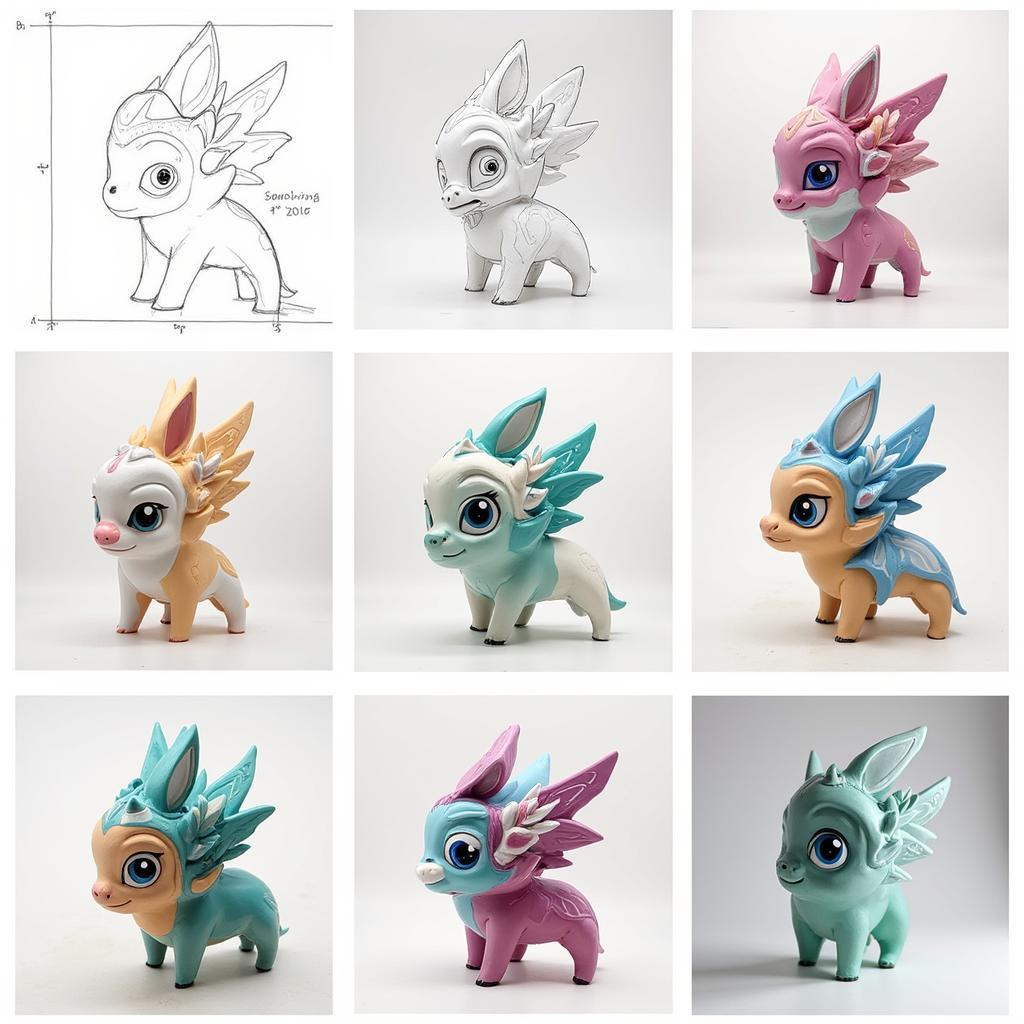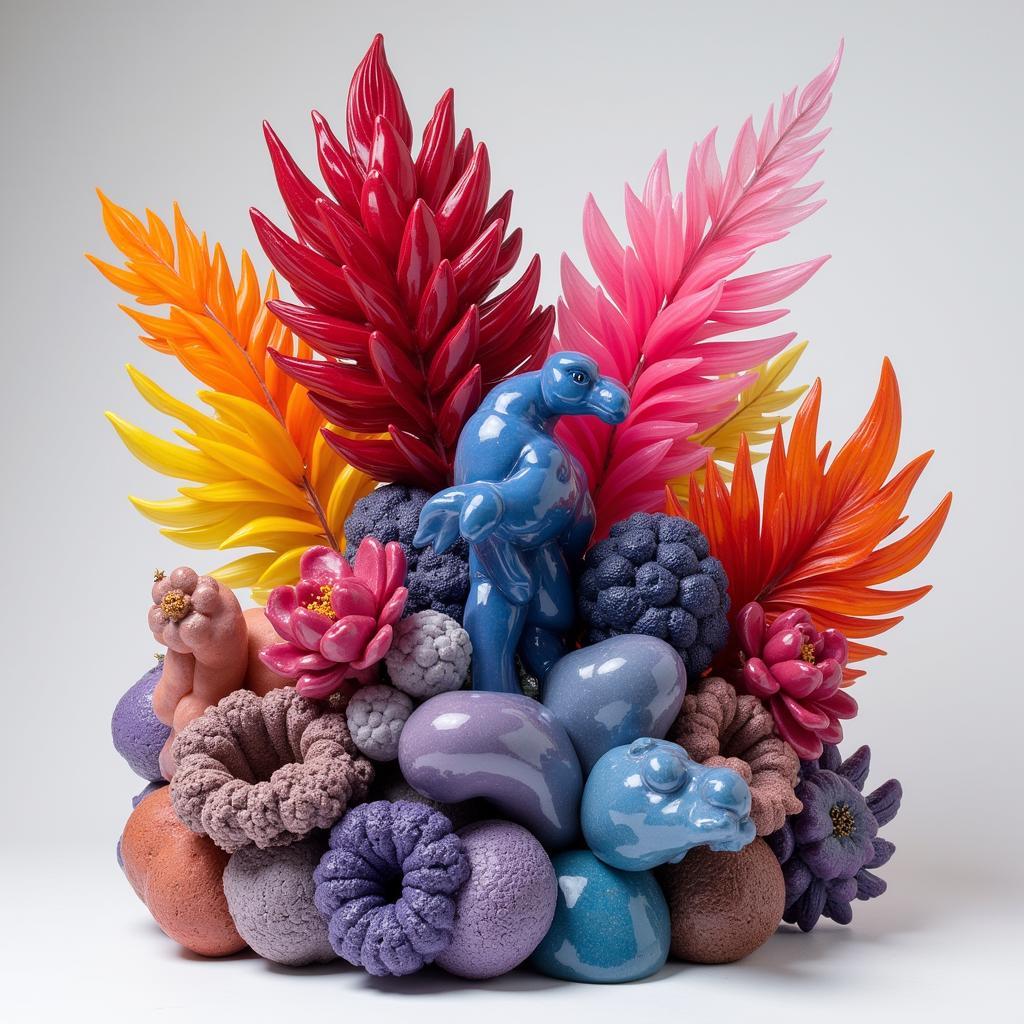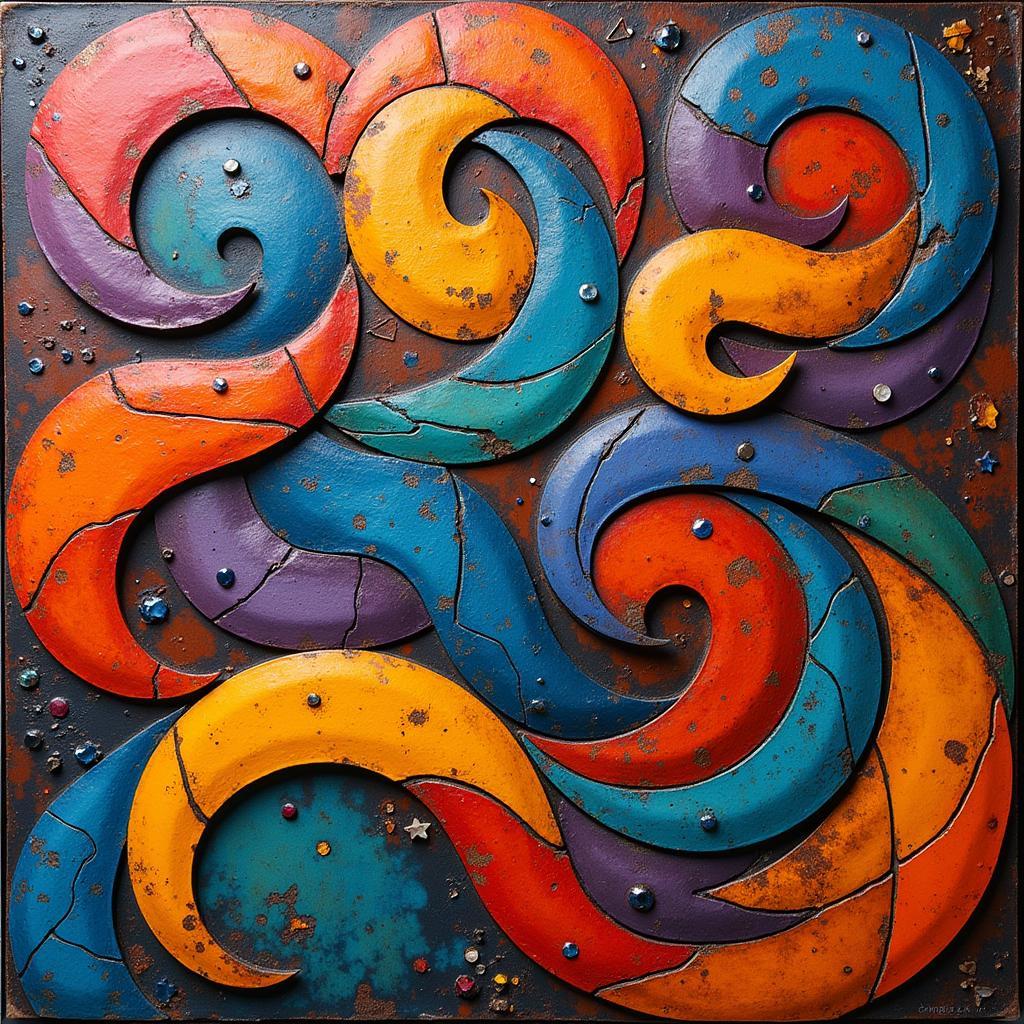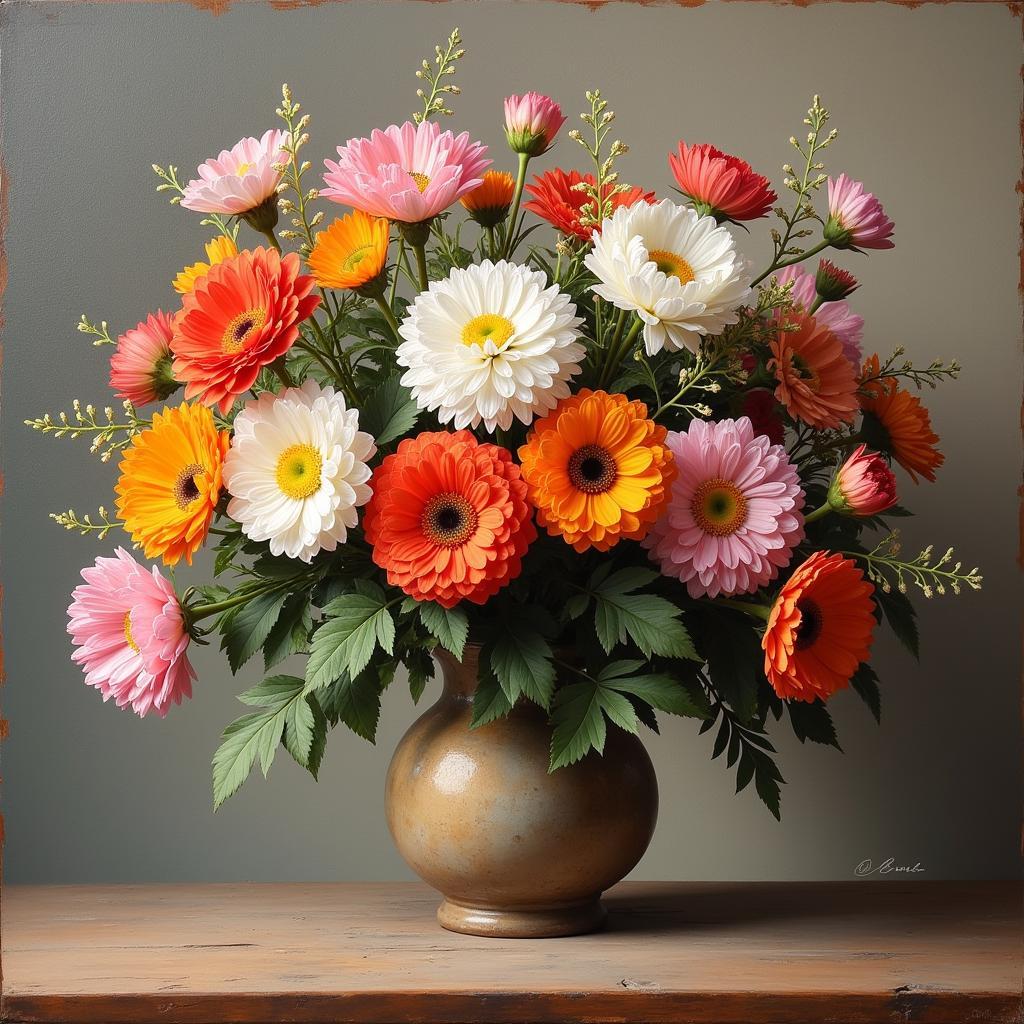Exploring the Dynamic World of Acrylic Art Sculptures
Acrylic Art Sculptures represent a fascinating intersection of painting and sculpture, offering artists a versatile medium to bring their creative visions to life. From small, intricate figurines to large-scale installations, acrylic allows for a wide range of artistic expression. This vibrant and durable material opens up a world of possibilities for artists seeking to explore three-dimensional forms with a modern twist. We’ll delve into the captivating world of acrylic sculptures, exploring techniques, inspiration, and the unique qualities that make this medium so appealing. Just after you master the basics of color mixing, you can dive into advanced techniques like creating salmon art.
Unveiling the Versatility of Acrylics in Sculpture
Acrylics offer a unique blend of properties that make them ideal for sculpting. Their quick drying time allows for rapid layering and building of forms, while their transparency can be exploited to create ethereal, light-infused pieces. Unlike traditional sculpting materials like stone or clay, acrylics are lightweight and relatively easy to manipulate, making them accessible to artists of all skill levels. This adaptability makes acrylics a fantastic choice for both beginners and experienced sculptors looking to experiment with new techniques.
Choosing the Right Acrylics for Your Sculpture
When working with acrylic sculptures, selecting the correct type of acrylic is crucial. There are various formulations available, each with its own unique characteristics. For instance, pouring acrylics are ideal for creating smooth, glossy surfaces, while thicker, modeling pastes are better suited for building up texture and volume. Understanding the nuances of each type of acrylic will help you achieve the desired effects in your artwork.
- Casting Acrylics: These are designed for creating solid, durable sculptures by pouring into molds.
- Modeling Pastes: These thick acrylics can be sculpted directly or used to add texture to existing forms.
- Acrylic Mediums: These can be mixed with acrylic paints to modify their consistency, drying time, and other properties.
Exploring Acrylic Sculpture Techniques
From carving and molding to assembling and painting, a wide array of techniques can be employed in acrylic sculpture creation. Carving involves shaping a solid block of acrylic using tools like chisels and files. Molding allows for the creation of multiple identical pieces by pouring liquid acrylic into a mold. Assemblage involves combining various pre-formed acrylic elements to create a composite sculpture. Each technique offers unique possibilities for artistic expression.
Finding Inspiration for Your Acrylic Masterpieces
Inspiration for acrylic art sculptures can be found everywhere. The natural world, with its diverse forms and textures, provides a rich source of ideas. Abstract concepts, emotions, and personal experiences can also be translated into compelling three-dimensional forms. Exploring different art movements, studying the works of established sculptors, and experimenting with different materials can all spark creative inspiration. You might even be inspired by fruit of the spirit art.
From Concept to Creation: The Acrylic Sculpture Process
The process of creating an acrylic sculpture typically begins with developing a concept or idea. Sketching and model-making can help visualize the final form and refine the design. Once the design is finalized, the artist selects the appropriate acrylic materials and techniques to bring their vision to life. The actual sculpting process may involve multiple stages of building, shaping, and refining the form. The finished sculpture can be left unpainted or enhanced with acrylic paints and other decorative elements.
 The Acrylic Sculpture Process: From Concept to Creation
The Acrylic Sculpture Process: From Concept to Creation
Caring for Your Acrylic Art Sculptures
Proper care and maintenance are essential for preserving the beauty and longevity of acrylic sculptures. Acrylics are relatively resistant to damage but can be scratched or chipped if not handled carefully. Dusting regularly with a soft cloth will help keep the surface clean. Avoid using harsh chemicals or abrasive cleaners, as these can damage the acrylic. Displaying sculptures in a stable environment away from direct sunlight and extreme temperatures will help prevent discoloration and warping. Thinking about where to store your creations? Check out some ideas for storage cabinets for art supplies.
Conclusion: Embracing the Artistic Potential of Acrylics
Acrylic art sculptures offer a dynamic and exciting medium for artistic expression. The versatility, durability, and vibrant colors of acrylics make them a compelling choice for both emerging and established artists. From intricate miniatures to monumental installations, the possibilities are endless. Embrace the potential of acrylics and embark on a creative journey to explore the captivating world of three-dimensional art.
FAQ
-
What are the advantages of using acrylics for sculpture? Acrylics are lightweight, durable, quick-drying, and available in a wide range of colors and finishes.
-
What types of acrylics are suitable for sculpting? Casting acrylics, modeling pastes, and acrylic mediums are commonly used for sculpting.
-
How do I care for my acrylic sculptures? Dust regularly with a soft cloth and avoid harsh chemicals or abrasive cleaners.
-
Where can I find inspiration for acrylic sculpture designs? Nature, abstract concepts, and personal experiences are all potential sources of inspiration.
-
What tools do I need for acrylic sculpting? Depending on the technique, you may need tools like chisels, files, molds, brushes, and palette knives.
-
Can I paint my acrylic sculptures? Yes, acrylic paints adhere well to acrylic surfaces.
-
Are acrylic sculptures suitable for outdoor display? While acrylics are relatively durable, prolonged exposure to sunlight and extreme temperatures can cause discoloration and warping.
 A Finished Acrylic Sculpture: Showcasing the Vibrant Colors and Unique Forms Achievable with Acrylics
A Finished Acrylic Sculpture: Showcasing the Vibrant Colors and Unique Forms Achievable with Acrylics
Situations Where Acrylic Sculptures Shine
- Modern Art Installations: Acrylic’s vibrant colors and ability to be molded into complex shapes make it perfect for large-scale installations.
- Home Decor: Smaller acrylic sculptures can add a touch of modern elegance to any living space.
- Jewelry Design: Acrylic beads and pendants can be incorporated into unique and colorful jewelry pieces.
- Educational Settings: Acrylics are a safe and easy-to-use medium for art classes and workshops.
Related Articles & Resources
- Explore the beauty of romantic couple art.
- Celebrate the spirit of independence with art 4th of july.
For further assistance, please contact us at Phone Number: 02462573573, Email: [email protected] Or visit us at Savico Megamall, 7-9 Đ. Nguyễn Văn Linh, Gia Thụy, Long Biên, Hà Nội 10000, Việt Nam. We have a 24/7 customer service team.




